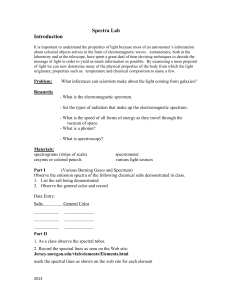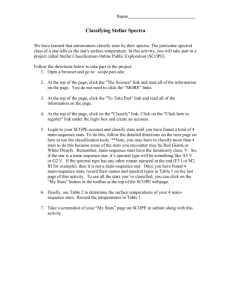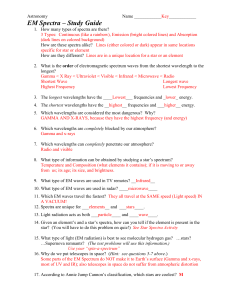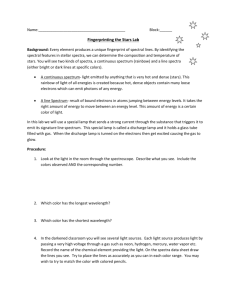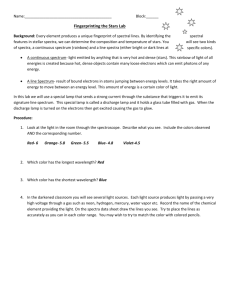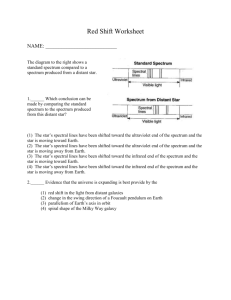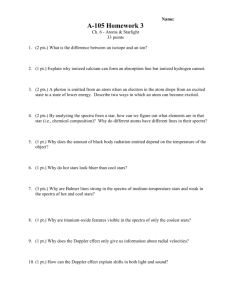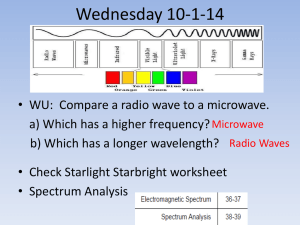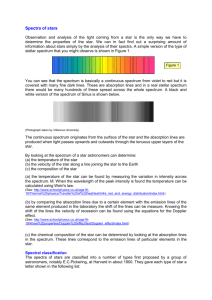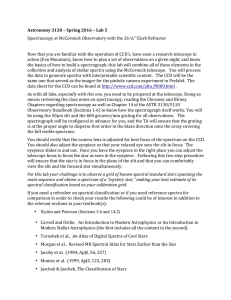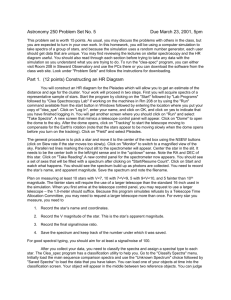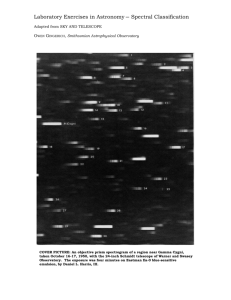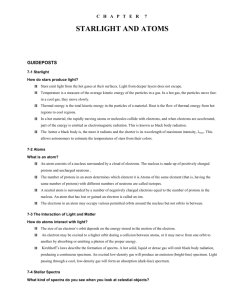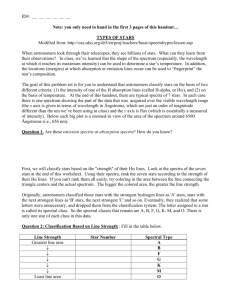Instructions for Spectra Lab
advertisement
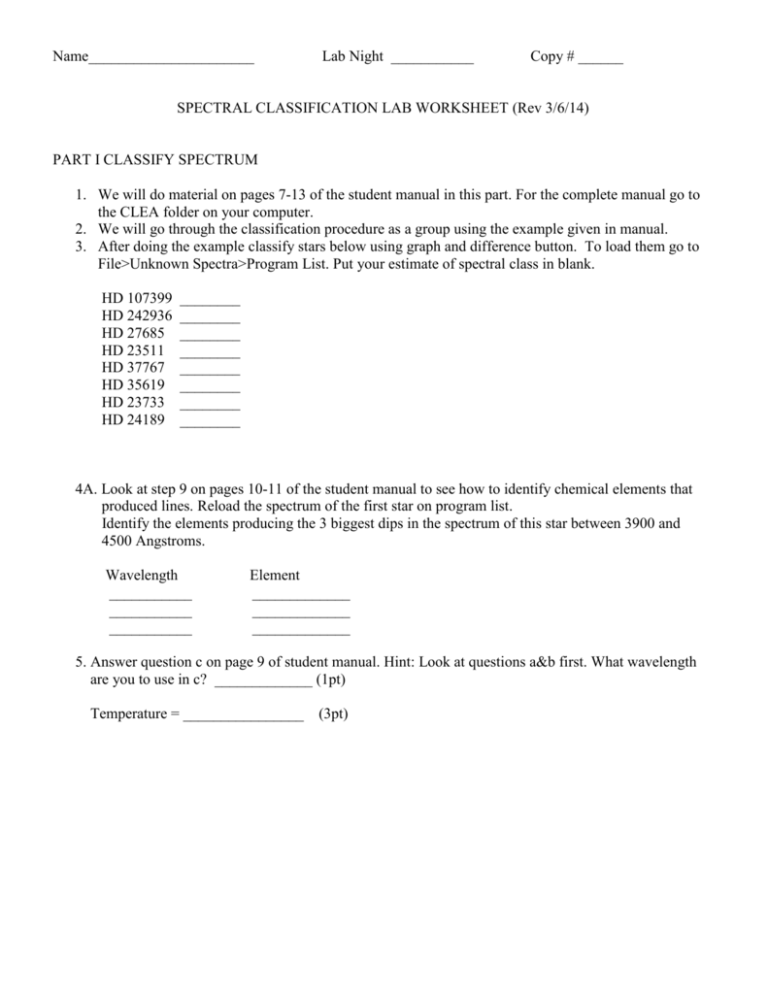
Name______________________ Lab Night ___________ Copy # ______ SPECTRAL CLASSIFICATION LAB WORKSHEET (Rev 3/6/14) PART I CLASSIFY SPECTRUM 1. We will do material on pages 7-13 of the student manual in this part. For the complete manual go to the CLEA folder on your computer. 2. We will go through the classification procedure as a group using the example given in manual. 3. After doing the example classify stars below using graph and difference button. To load them go to File>Unknown Spectra>Program List. Put your estimate of spectral class in blank. HD 107399 HD 242936 HD 27685 HD 23511 HD 37767 HD 35619 HD 23733 HD 24189 ________ ________ ________ ________ ________ ________ ________ ________ 4A. Look at step 9 on pages 10-11 of the student manual to see how to identify chemical elements that produced lines. Reload the spectrum of the first star on program list. Identify the elements producing the 3 biggest dips in the spectrum of this star between 3900 and 4500 Angstroms. Wavelength ___________ ___________ ___________ Element _____________ _____________ _____________ 5. Answer question c on page 9 of student manual. Hint: Look at questions a&b first. What wavelength are you to use in c? _____________ (1pt) Temperature = ________________ (3pt) Part II Obtaining Spectra Obtain spectra and classify for 2 stars. This is outlined below. Additional details are on page 15-19 and in Appendix of student manual. 1. Select Take Spectra under File>Run. When you have control of the telescope open the dome and turn on tracking. Select Pleiades in Field Menu. The coordinates of the two stars to use are below. Use Set Coordinates to move telescope to these stars. You may want to increase the slew rate. Star # RA DEC 1 3h 40m 45.26s 23deg 27m 3.7s 2 3h 46m 15s 24deg 00m 6s 2. When you reach the star click on Change View. If the star is not between the red lines use the N,E,W,S buttons to move lines to star. 3. Click on Take Reading. Start Count. Stop when Signal/Noise is >100. Look below spectrum for HD number and record below. Save spectrum using last 3 digits of HD number as ID #. Record apparent magnitude(m) also before moving on. 4. Go back to File> Run> Classify Spectra. Bring up Atlas of Standard Spectra you used earlier. Load your spectrum and compare yours with standards. Go through the standard spectra using the up and down buttons. Record nearest standard spectral class below. 5. Get temperature and absolute magnitude from Internet for your spectral class. Try this web site first: http://www.uni.edu/morgans/astro/course/Notes/section2/spectraltemps.html. Calculate distance in parsecs (p20 of manual). 6. Repeat process with other star. HD # Apparent Mag (m) Spectral Class Temp Absolute Mag(M) Distance 1 2 Part III Photographic Classification 1. Select Classify Spectra (File>Run). 2. In the window that comes up go to File>Preferences>Display. Select Greyscale Photo. Before electronic devices were available to measure intensity of lines spectra were classified by matching lines on photographs. 3. Load Atlas of Standard Spectra (Main Sequence). 4. Go to File>Unknown>Program List. Select SAO 81292 as unknown. With the aid of the wide dark line in the center classify the spectrum by comparing with standards. 5. Load the last star on the program list and classify using photo not tracing. #4 Spectral Class __________ #5 Spectral Class __________ Part IV Solar Spectrum Attached is a graph of the spectrum of the Sun obtained by our advanced lab electronic spectrometer. Several absorption lines have been marked. Identify the chemicals producing these lines using the wavelengths from the graph and hints below. Put the element producing the lines in the blanks. These were among the first chemicals to be identified in a star. Hint: Use Google to search Internet. A) Line 4 is due to one of the elements in salt ____________ B) Lines 6&7 are produced by the 2nd most abundant element is the Earth’s atmosphere. ____________ C) Line 3 is produced by a material commonly used to make magnets. ____________ D) Lines 2 & 5 are produced by the most abundant element in the universe. ___________ Point Values: 3 points each blank except Part I #5 wavelength 1pts. Total=100

